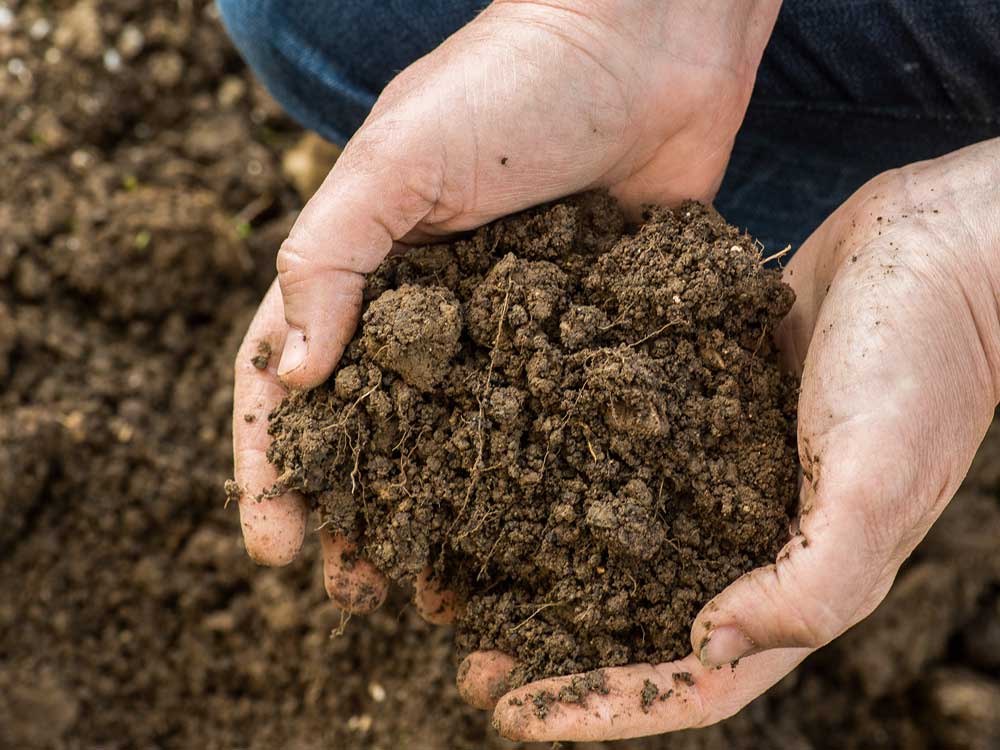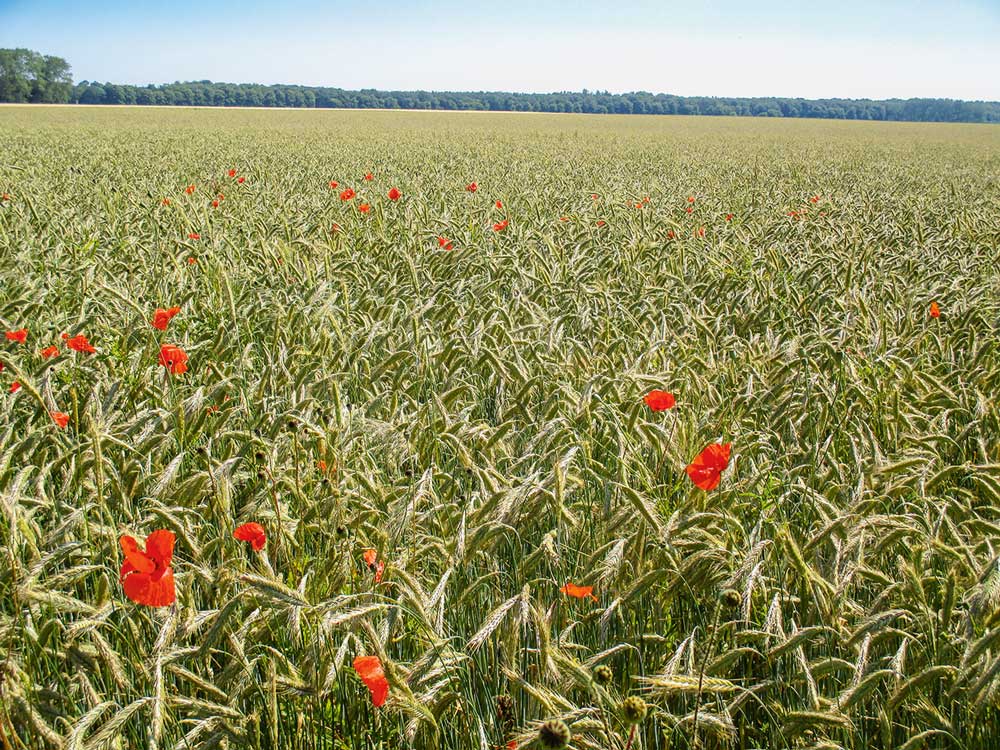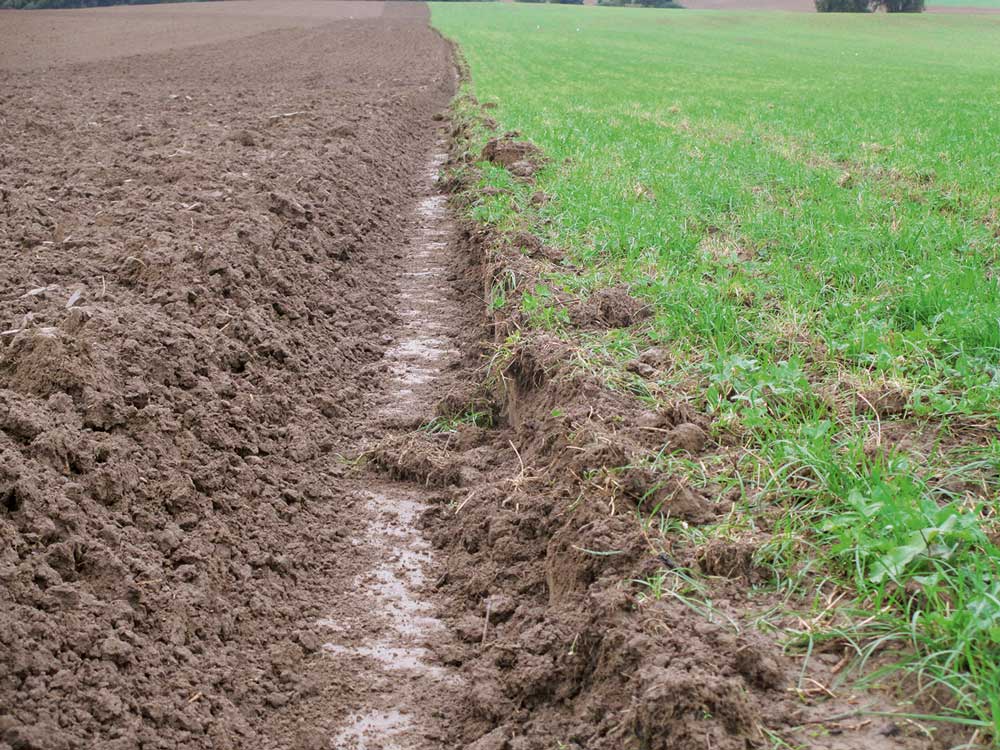Humus: Facts and myths
By Gustav Alvermann, Organic Farming Advisor, Westerau
Everything flows! - So the philosophy goes. A parallel to agriculture can be found in the humus content of the soil. This follows a "flow" equilibrium of supply and decomposition of organic matter. Flow equilibrium means that there is a feedback between supply and decomposition. The final resulting humus content over the years does not fluctuate as much as the supply of organic matter in everyday management. Different assessments of the potential for a significant increase in humus content in arable soils result from the difference between understanding this complex process via cascades of soil microbes as flowing or seeing it as static.
"No field without manure."
Until 1960, the regular supply of organic matter from root-rich forage crops and organic fertilisers was part of all arable thinking. Today, these management elements are hardly ever found on cash crop farms. Has the humus content thus completely disappeared? No. The flow equilibrium of build-up and decomposition has merely shifted slightly downwards. Buffering factors here are very high yields of cash crops with corresponding root excretions and their harvest residues. In addition, there has been a gradual reduction in tillage, which has emerged with the development of modern tillage systems.
The crucial point, however, is that "flow" equilibrium means that the decomposition rate decreases in a regulating manner with a lower supply of organic matter. One percent more or less humus is just as big a difference as 1 degree temperature difference in the global climate. It is not so easy to change this in the short term.
And yet: ten years ago, the Thünen Institute in Braunschweig drew the sobering conclusion: "We lose relevant amounts of carbon every year on all sites used for agriculture." A new equilibrium in humus content has thus obviously not been and still has not been achieved. This is a challenge for each individual arable farm to counteract the predominant decomposition of organic matter by cultivating catch crops and using organic fertilisers in an additional stabilising way.
Not everyone has to push humus build-up
If you are a root crop farmer and farm on sand, you should compensate for the increased turnover with fertiliser, soil cultivation and catch crops - and where appropriate, also with surface rotting and microbial carbonisation. On the other hand, if you have enough forage crops in the rotation, you can mobilise their harvest and root residues for the cash crops (e.g. by shelling them twice). And those who conventionally cultivate mainly threshed crops on heavy, wet marshes tend to have other problems than the humus content of their soils (e.g. field foxtail grass).
Targeted use of organic matter
The decomposition of organic matter in the soil - from previous crop, fertiliser or humus - is a process that is relevant to the success of arable and crop farming. This is because it is also associated with many important positive effects:
- Nutrient supply (nitrogen, phosphorus, sulphur),
- CO2 release as a "yield turbo" during assimilation,
- Hygienisation (decomposition of fungal pathogens and weed seeds),
- fermentation (root crops are better suited for this than cereals).
In an arable farming book from 100 years ago, the last point reads like this: "The parched soil is friable and crumbly, so that it is both well aerated and favourably placed in its moisture state. It contains a greater quantity of absorbable plant nutrients. The best tilth is achieved when the soil is subjected to a thorough fallow treatment. The farmer who has not understood this and does not take care of the fermentation remains a bungler in his profession all his life." This is comparatively drastic language for a textbook. In those days, when there was a good supply of organic matter, the targeted mobilisation of soil potential was considered to be correspondingly important. Why not revive the "fermentation economy" as an agronomic instrument, at least partially in crop rotation (e.g. with rape), in the same way as the "humus economy"? Both sides of the humus coin are valuable and worthy of attention.
Organic farming: mobilising organic matter
Without it, there are meagre yields. For no sector is the one-sided reliance on humus build-up as delicate as for organic farming. This is especially true for organic cereal production. One of the basic principles of organic farming is to feed crops from the decomposition of organic matter. The "fairy tale book of organic farming" is based on mixed farms that have the arable fundamentals mentioned above (forage production and organic fertilisation). In addition, it is assumed that there is abundant warm rain during the main growth period of the crops in May and June, which, on top of that, falls on a well-structured and manageable mild loam soil. Under such conditions, the decomposition of organic matter runs like a flash in the pan and ensures that the plants are well supplied with nutrients in parallel with their needs. However, these optimal conditions are rarely found in reality today. Neither the farm structures nor the rainfall distribution nor the soils correspond regionally to the archetypal ideas.
Targeting mineralisation
In the North German Plain, for example, with a maritime climate (wet autumns-winters, dry early summers), the extreme soils of less than 10 % or more than 25 % clay in particular require targeted attention to mineralisation. After any tillage, the light sands immediately show a structure that allows a quick start of nitrogen release. If these soils are tilled too early in autumn, an explosive release of nutrients will begin as soon as the conditions become moist again and are still warm. If winter cereals are subsequently tilled from the beginning of October, they will no longer be able to reach the heavily siphoning tillers in autumn and the nitrogen will be lost over winter. In this region, sandy soils are "washed through" three to five times over winter.
If nitrogen is freely available in autumn, such as after potatoes or grain legumes, an intercrop or a skimming market crop must follow. Winter rye sown between 10 and 15 September ensures this. Winter barley and triticale also do so in a weakened form. If the nutrients are still bound in plants (clover grass, hardy catch crops), they are mobilised on light soils, preferably in spring.
Be aware of soil properties
The opposite problem exists with heavy soils with more than 25 % clay. If they are already borderline wet at the time of autumn tillage, tillage will produce a soil structure that allows little microbial activity in the short term. The heavier the soil and the wetter the tillage, the longer it takes to regenerate into an "active" soil that releases nutrients. A deeper spring tillage is even more delicate here after wet winters - regardless of whether plough or cultivator is used.
Heavy soils need time to mineralise. For winter tillage, organic matter is pre-rotted in September, and for summer tillage, the classic winter furrow usually produces the best yields.
The nutrient supply from the conversion of organic matter from soil and fertiliser does not automatically proceed as desired on the majority of German sites. Each farmer has to analyse the characteristics of his site in detail and develop a suitable mobilisation management.
Adapted soil use
If too much emphasis is placed on humus build-up, then, at least in the case of cereals, there is quickly a conflict of objectives with nitrogen supply. The solutions are often contradictory. One must speed up mobilisation, the other should actually slow down at certain times because otherwise there are losses (sandy soils in autumn). Basically, however, in organic farming, too much reduction of tillage is counterproductive with regard to the nitrogen supply of the crops. It is not for nothing that a reference book on soil microbiology states: "If the nitrogen supply for plant production is to be provided largely from organic matter, intensive tillage appropriate to the site cannot be dispensed with. This is the only way to increase the flow of nutrients through the microbial biomass."
Conclusion
The level at which the flow equilibrium of the humus content settles depends primarily on the site and the management. For the practitioner, it is crucial that he finds solutions that lead to attractive yields on his farm. Provided that these yields are generated predominantly from the organic matter offered and its mobilisation appropriate to the site and crop type, one can confidently assume that the soil microbes also "set aside" sufficient matter for humus regeneration in parallel with the nitrogen release.





